Last month I had the opportunity to learn more about veal. I traveled to Pennsylvania and New York to not only tour veal farms but also tour a veal processing plant and a veal feed plant. I am not going to pretend that veal isn't a controversial subject. However, after my tour, I can tell you that I feel a lot more confident in how veal is raised. It was an eye-opening experience and I want to share with you what I learned and what I saw.
-This post is sponsored by Veal, Discover Delicious, funded by the Beef Checkoff. I was compensated for my time and travel expenses. However, as always my thoughts and opinions shared here are my own.-
I grew up eating veal. My family is Swiss and Kalberwurst is a regular feature at our family's Christmas lunch. My grandma often made the most delicious veal stew and I wish I had her recipe so I could recreate it now that she is gone. That being said, as a dairy farmer who shares publicly about farming, one of the most frequent criticisms I see from the non-farming public is that the veal industry is pretty horrible and is a direct "by-product" of the dairy industry.
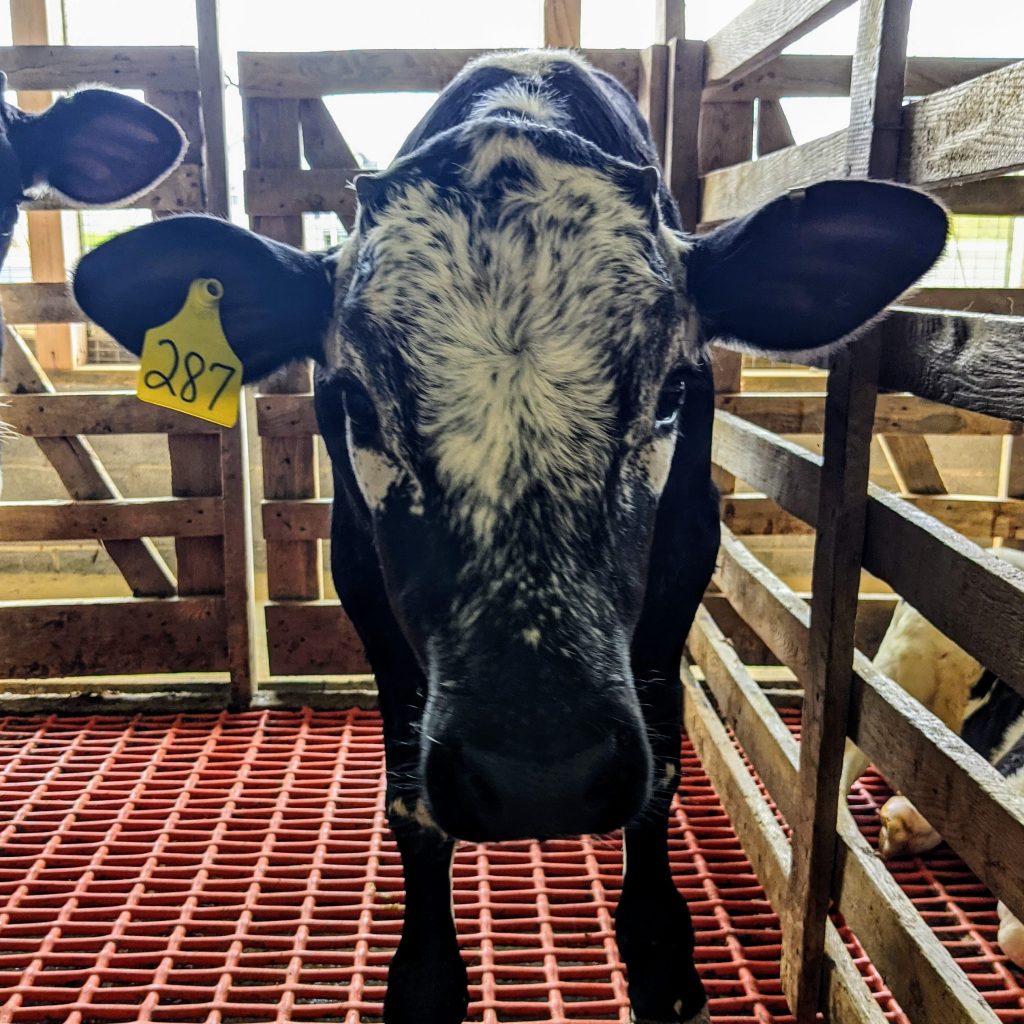
Now I will admit, even though I eat veal, I hadn't done a really deep dive into how it was raised. I wasn't sure how much of what I had heard about veal production was fact and how much was fiction. So I was thankful to be invited along on this tour so that I could see with my own eyes how veal calves are raised and yes, slaughtered. This tour was a full experience. They hid absolutely nothing from our group and we had full access to see everything.
So now that I have seen the entire veal life cycle for myself. Here is what I want you to know.
1. Veal calves probably aren't raised how you think they are.
This fact was the most eye opening for me. Honestly, I expected the barns to be dark, dreary and smelly. I expected to see some sick calves. I expected the calves to be loud and mooing when they saw us.
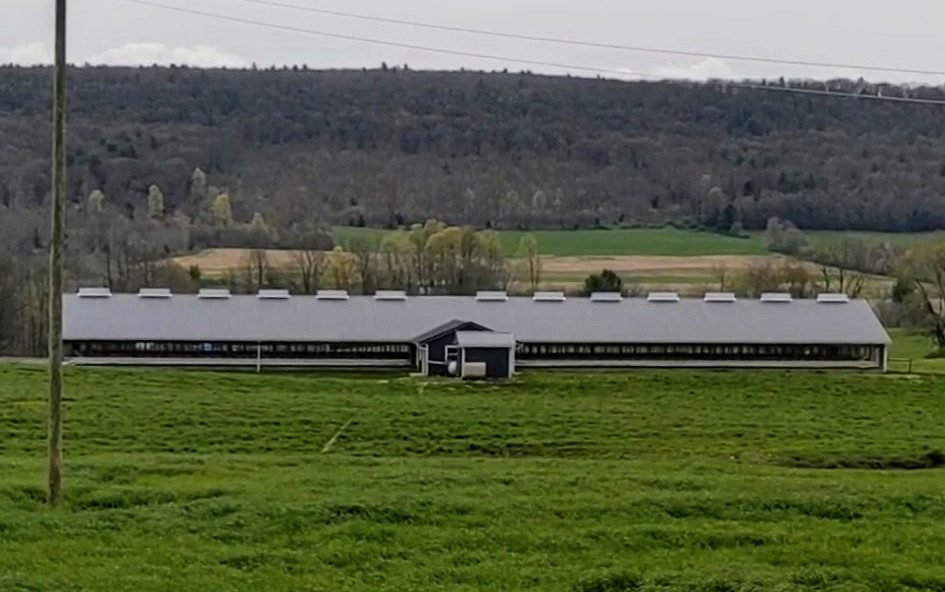
My expectations were so off! You guys, the barns we toured we absolutely the cleanest barns I have ever been in. I thought they were brand new barns and I was surprised to hear that they weren't. The barns have side curtains for walls that were rolled down and there was great breeze blowing through. There was next to zero smell and the air quality for the calves was fantastic.
The calves were very healthy. I saw no signs of illness, even in the barn that had two week old calves. I point this out because the two week old age is when a lot of common calf illnesses like to pop up. The barns were also super peaceful and quiet. A stressed calf is a loud calf and these calves were definitely calm and relaxed.
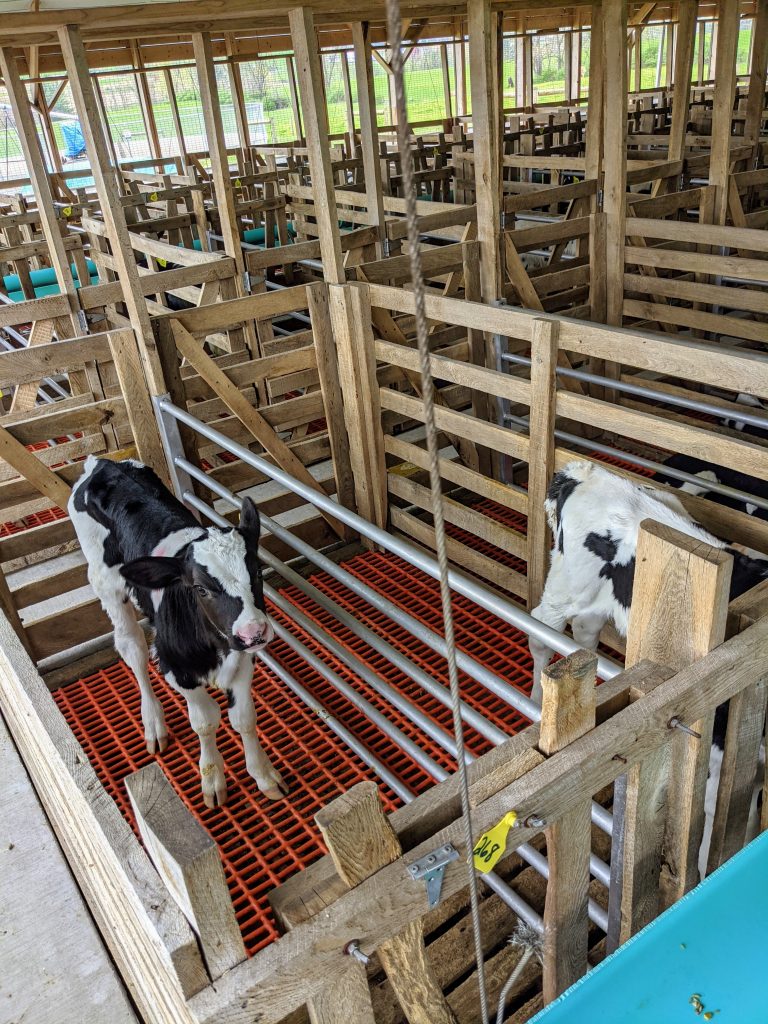
2. Veal calves aren't tiny little babies when they are processed.
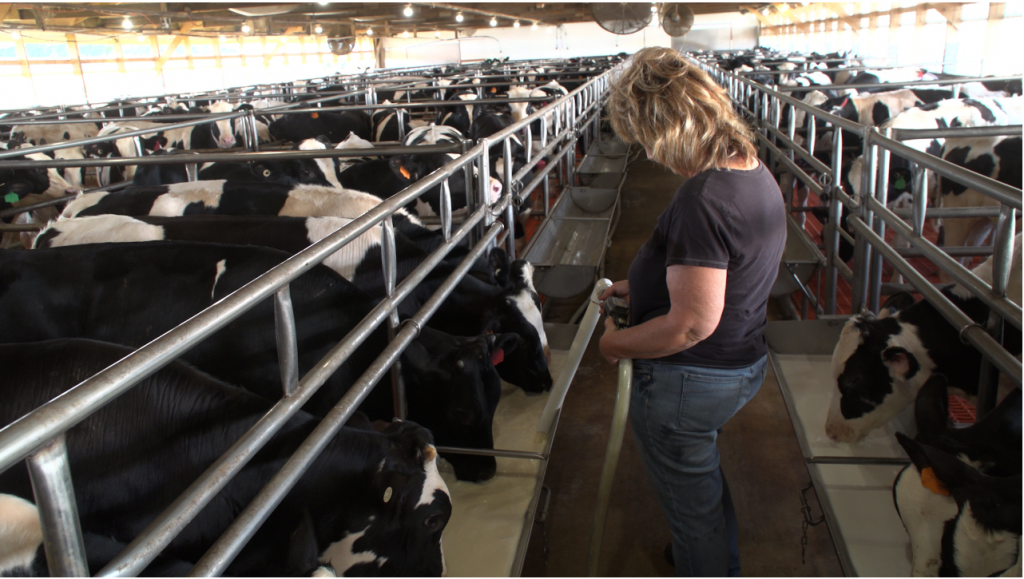
The vast majority of veal calves are Holstein bull calves. They are raised until they are around 450-500 pounds and around 5 months old. For some perspective, pigs are about the same age when they are processed.
3. Veal calves aren't raised in tiny crates.
This is probably the biggest myth about modern veal. While many people believe that veal calves are raised in crates so small that they can't move, or think that calf hutches are veal crates, that's simply not true. Today veal calves start out in individual pens until their immune system is developed and then move into buddy or group pens. In 2007 the American Veal Association passed a resolution that required all veal calves to be raised in groups pens after 10 weeks of age by 2017. The farms we visited used the buddy system with pens of two calves, other farms have bigger groups.
Farmers raising veal participate in the Veal Quality Assurance program which is similar the National FARM Program we follow as dairy farmers. On veal farms, veterinarians certify farmers are following the best management practices required of the program and that includes group pens.
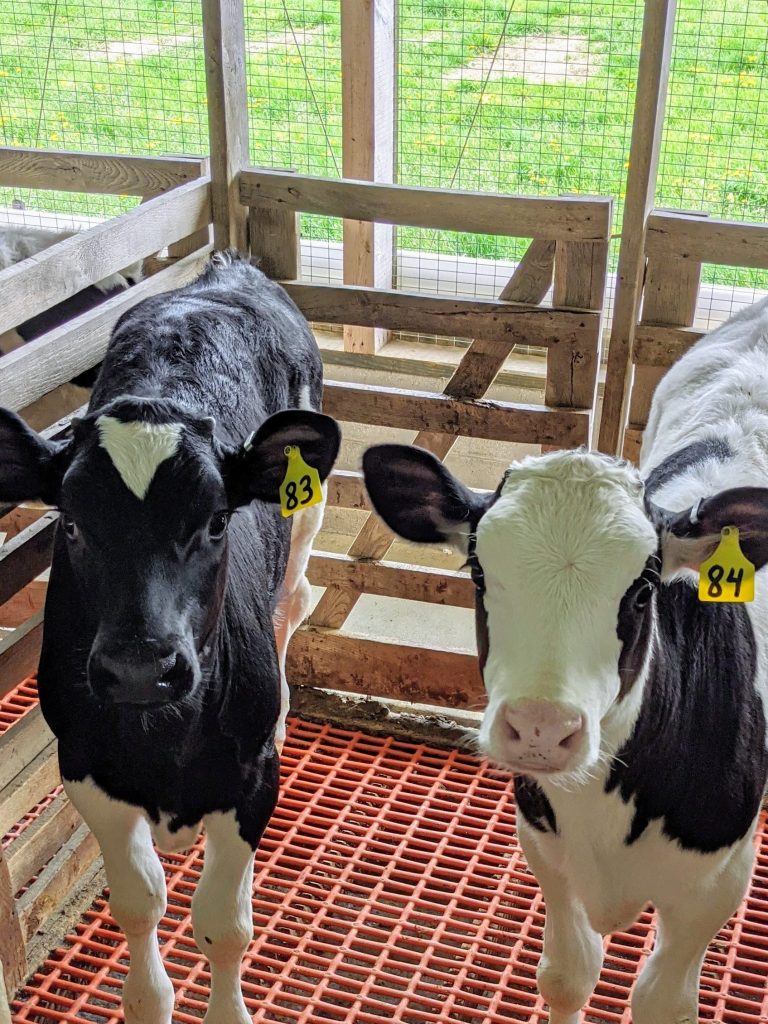
4. Veal calves are fed milk AND grain.
Probably the next biggest myth about veal is that the calves are fed nothing but milk*. I had always heard that a milk only diet was used because it kept the meat white but I had also heard that it wasn't healthy for the calves. I was surprised to learn that veal calves are fed both milk and grain. Milk is the majority of the calf's diet, but grain is also offered. In the barns we visited all the calves had access to grain at all times.
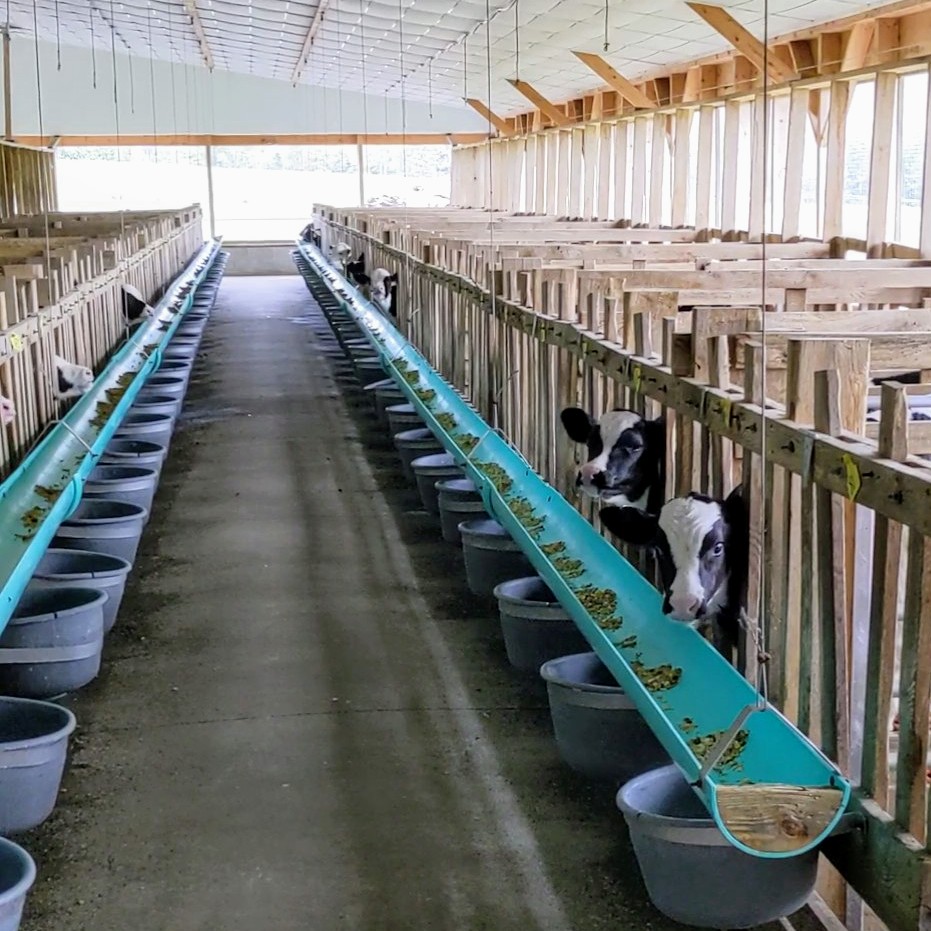
*Veal calves are fed a specially designed formula made from milk components and other vitamins and minerals vs being fed straight milk. It's very similar to the milk replacer we feed our calves. If you're going to come at me about how they should only have straight milk because formula is somehow inferior, you should know that both of my boys were formula fed and I have zero regrets about that.
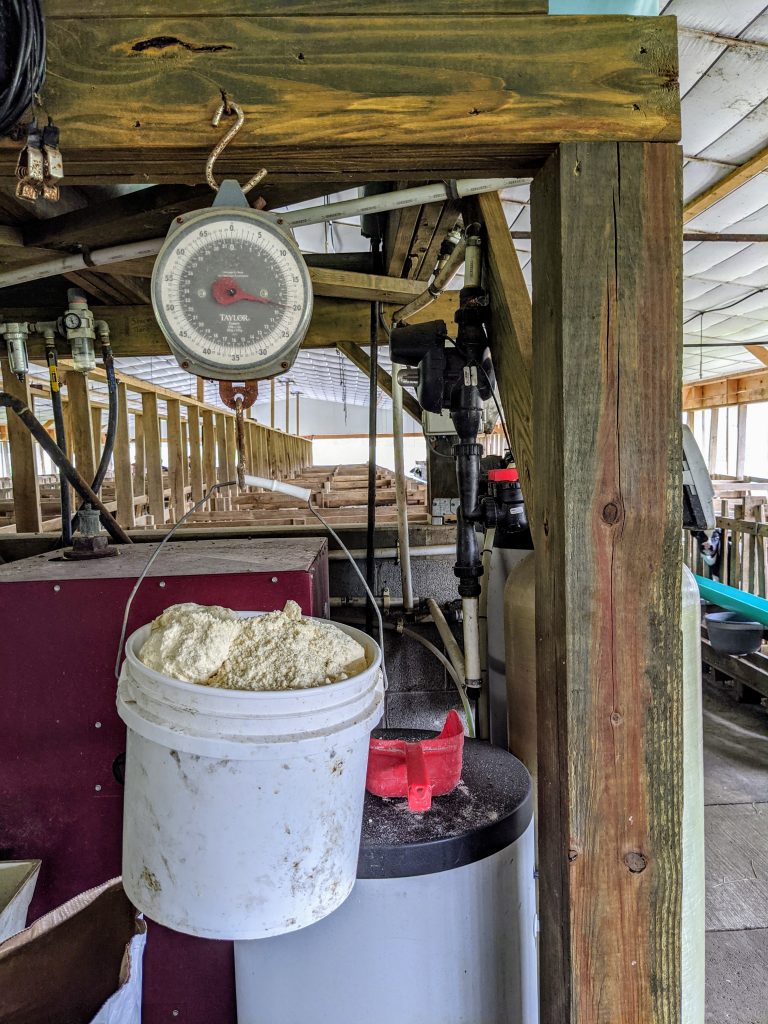
5. It's a myth that all dairy bull calves are raised for veal.
Every year there are about 200,000 Holstein bull calves raised for veal in the United States. In 2019 there were 9.34 million dairy cows in the U.S. You do the math.
6. Humane slaughter is real and our food systems are safe.
When I said we toured the veal processing plant, I mean we really toured the entire plant. I am thankful that Marcho Farms gave us a very transparent look at not just the farms that raise calves for them, but also the entire process at their plant. No one likes to focus on this step of the process between farm and fork, but it's an important part of food safety and animal welfare. The veal calves we saw pre-slaughter were clean, calm, and relaxed. The entire processing system from harvest, meat cutting, to packaging, was extremely efficient and clean. The people working were knowledgeable and very skilled in their jobs.
In the end it's up to each person to decide what they eat. After seeing veal farms and a veal processing plant, will I still eat veal? Yes I will. And I will likely try some new veal recipes in the future. If you also enjoy veal, be sure to check out Veal, Discover Delicious for some great recipes.
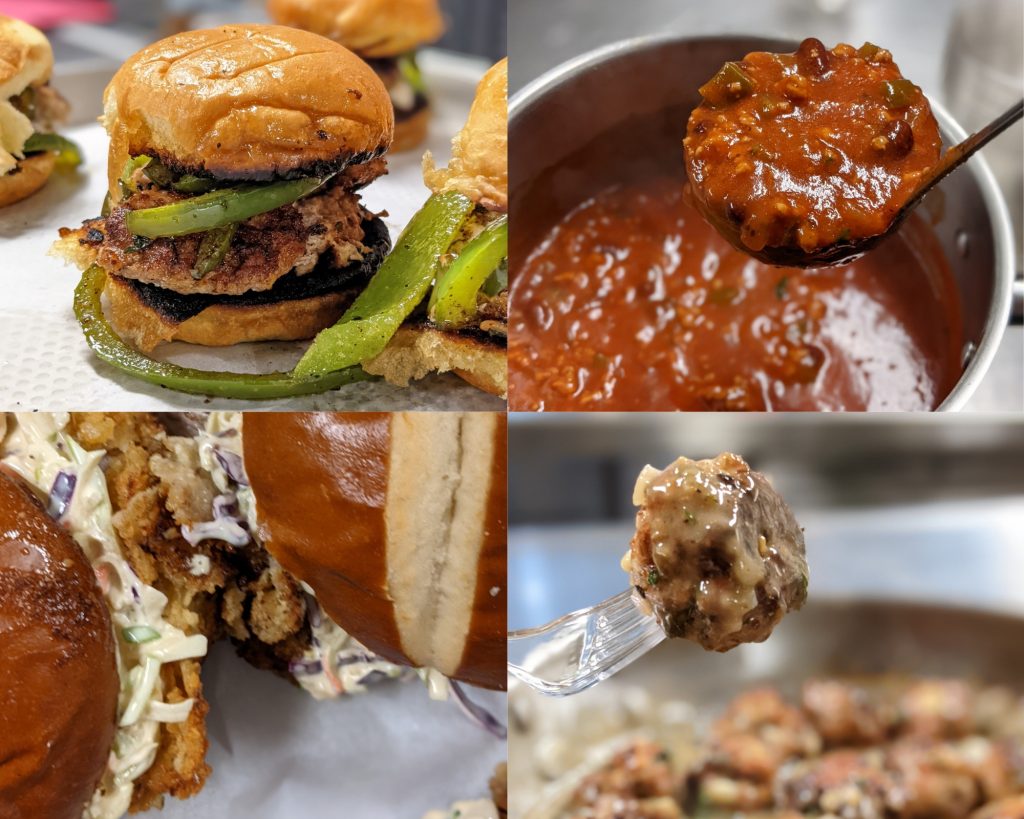

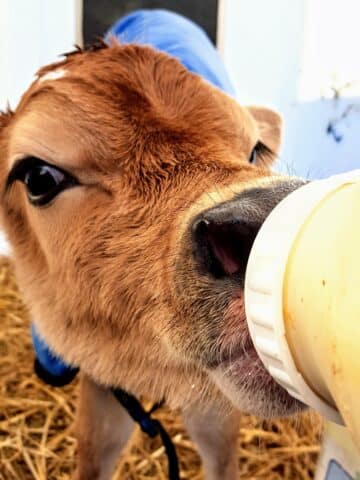
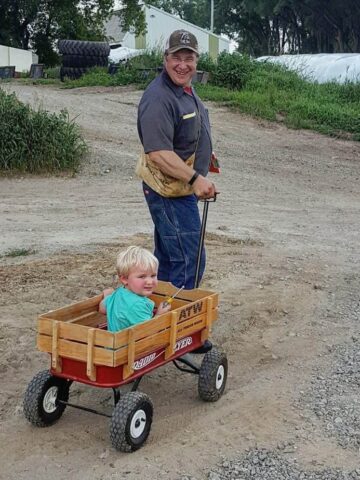
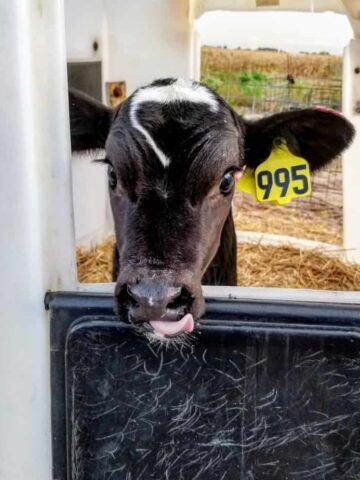
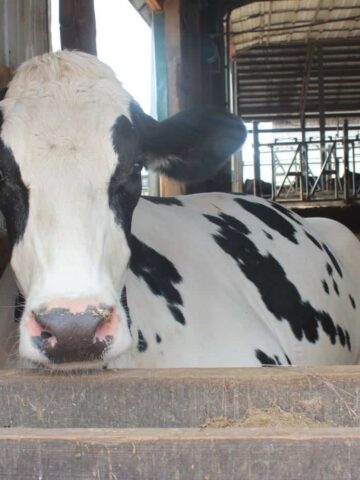
Adrianne
I WISH veal was more affordable. I love veal parmesan… not the ground (who knows what’s in it)patties, but REAL veal filet.
I’ll have to look locally
Thanks for this article.
dairycarrie
So since I got to see the processing portion, I can assure you that ground veal is whole muscle that's been ground. Nothing fishy mixed in!
Sonny Wolfe
I use to raise veal calves in Pennsylvania I ran them in pens of 30 calves I had two pens side by side I had them on a machine that machine would handy 60 calves I would increase the power every couple of days they could eat anytime they wanted to. I would fill the feeder in the morning and my wife would get the calves up and move them around so they wouldn’t lay around and get sick. I had two big air tubes that would move air . I would open the doors in good weather, had little heat in bad weather. Raised them over 400 lbs on slates they would run and play together nice shiny coats no grain except for the heifers I raised to go into my beef herd
Heather
the poor calves are still stuck in minuscule enclosures, even if it’s not a “veal crate.” they will never be able to run or even walk around except to do a tiny circle around their tiny pen. how on earth you can look at these photos and call it humane i have no bloody idea. this is sick and disgusting; all calves deserve a pasture to frolick in freely. shame on you for promoting this.
Kim Kuipers
Thanks Carrie. I can set aside my ignorant and unsubstantiated guilt and enjoy now. I’m a meat lover by have never tried veal for most of the myths you mentioned.
Tinamarie Domingurz
My Polish grand mother used to fix our families “City Chicken”. I found out in my early teens it was Veal. It didn’t matter, it was delicious.
With all my Grandma’s 6 daughter’s spreading all over the U.S., we didn’t get any City Chicken. It Was time consuming for all the working moms.
Jennifer Madden
Carrie, thank you for sharing this. When I was in veterinary school in the early 1990’s, we were shown movies of veal calves always alone their whole lives, in small stalls. They had very little movement room. I feel much better about the current practices. No, they are not eating grass or hay, but they are having a chance to grow up some and have a life. We know the alternative most of them had…They have clean surroundings, companionship, and full tummies. I’m ok with that.
dairycarrie
The changes in the veal industry are really huge. I'm glad you feel better about current practices.
Paul
Hello, glad to see some light being shed on the veal industry, as I raise veal calves myself. These bull calves are never castrated because of the stress it putts on them. They are sold before 10 months which is when a bull starts to reach that level of maturity.
Kelli
Good morning. Thank you for this post. I am an agriculture teacher in Florida, and had very limited knowledge about veal— although the question comes up every year from a student.
Thank you so much for teaching me! I love your posts and learn so much from you.
dairycarrie
That made my day! Thank you.
Edward H. Schloz
A good Blog! Thanks for the info.
Dr. Babul- Veterinarian Doctor
Thank You!
Cassie
Thank you so much for sharing about this topic, Carrie! I’ve worked in agriculture my entire life and even I had some misconceptions about veal cleared up from this post. Looking forward to your cooking segment!
Laura
Very informative!
Thanks for sharing this.
I still feel I bit sad they don’t get to run on grass, but I realize the calves don’t know any different. Their behavior says it all- if they act content, they likely are.
I’m also biased since our operation is grass-based.
I didn’t know how old they were at slaughter— although I should have had a clue. A family member raises sheep, and I know forwards and backwards the difference between lamb meat in public thought: “poor, tiny, still-nursing babies”;
And actual lamb: almost yearlings, who look like adults, and whose diet consists mainly of pasture and good grass hay in the last few months. ( but they do still love milk for as long as they are in the same field as their dams!)
It doesn’t help that mutton,( over 2 yrs) hogget,( between 1 & 2 yrs) and lamb, (under 1) are all legally allowed to be labeled as “lamb” in the US. So a lot of people are convinced they don’t like lamb because they got a hold of a steak from an ancient sheep.
dairycarrie
There is some pasture based veal farms out there if that's something they you want to seek out. The meat is generally a little redder than typical veal.
I agree with you on the calves, it's hard to divide the line between what we think animals want and what they are content with. These calves seemed very content.
Christy
Interesting, now I need to read up on Calf hutches because I’ve always assumed that was for Veal. My Dairy friends would probably be disappointed in me.
Barb
Thanks for this info. I really had no idea. One thing you didn’t mention. At what age are the calves castrated? Or is that part of the processing?
dairycarrie
They don't castrate or dehorn the calves. No real reason to do so.
Barb
Two words. Mountain Oysters!!!
Paul
Hello, glad to see some light being shed on the veal industry, as I raise veal calves myself. These bull calves are never castrated because of the stress it putts on them. They are sold before 10 months which is when a bull starts to reach that level of maturity.
Karen
I enjoyed reading about the improvements in the veal calf industry. Keep up the good work educating the public about the improvements in the ag industry! Unfortunately I live near the Amish community and they do not have modern conveniences and still raise calves in small huts.
dairycarrie
These farms actually are owned and run by Amish families. We use hutches on our farm. Calves only live in hutches for the first couple months of life while the calf's immune system is still building.
agridane
Thanks for a very interesting article.
Laurie
I enjoyed this article. My father-in-law came across it and sent me the link. We raise beef, pork, lamb & chicken selling meats at farmers markets. Would like to start offering veal too. Some good info here.
Paulieboi
How the Amish, and how the rest of the world works are two very different things. I still find raising veal a despicable practice. Please visit some other veal farms to give an unbiased picture.
dairycarrie
So you're right, Amish live very different than a typical non Amish farmer. But, the standards on the farms we visited are actually industry standards and requirements, so while the farms we visited were unique in that they were run by Amish families, they are still a decent representation of how veal is raised today. I also got the chance to visit non Amish veal farms who raise calves in larger groups, so I've seen both sides and have confidence in how veal is raised.
Mrs Blu N. Green
I’d love to raise a handful of Veal Calves in my backyard I have an area of 50 x 35 I could create a living area for them, I was reading about a buddy system, 2 calves per pen and they could graze on another lot around the corner if more area is needed. I would be donating 50% to Local Food Pantry around the corner, 25% to caretakers and 25% to raise funds to continue cycle. How ? Where to Start, thanks.
Tom. Biedekapp
I thought veal calves were raised to about 4 months and 200 -250 lbs
And does grain darken the meat color
Thanks for your information
Tom. Biedekapp
I thought veal calves were raised to about 4 months and 200 -250 lbs
And does grain darken the meat color
Thanks for your information
Marly
Thank you for the informative article. I am glad to see that guidelines and practices have really improved. I too remember seeing videos and photos of a calf being left alone in a tiny pen.. it was heartbreaking. :'(
Everyone makes their own choices obviously, and does what is best for them.
I still will not eat veal, I also do not eat pork and other animals raised and slaughtered for our consumption that young.. I eat very little animal products (health reasons-prevention), and have found the lifestyle changes to be more coherent with how I feel and treat my body.
No, I'm not vegan, I do not identify with that. But... with that said, I am conscious of what I eat.
Daniel Dizney
I was an Ag. Loan Officer in the 1980’s. I saw firsthand veal calves chained in crates in which they were only able to stand or lay down. They were kept inside dark barns and the vast majority had scours (constant diaherria) because they were deprived iron in their diets. Seeing this affected me deeply and I have done as much as I can since to support reform in the industry. It is gratifying to see the majority of the veal growers have taken steps to improve the quality of life of these creatures.
I have two questions for you Carrie: 1) Can you say for a fact that there are no veal growers still using crates to restrict the movement of their calves? 2) Can you say that neither the mother cow nor her calf experience significant sadness when the calf is removed from the mother?